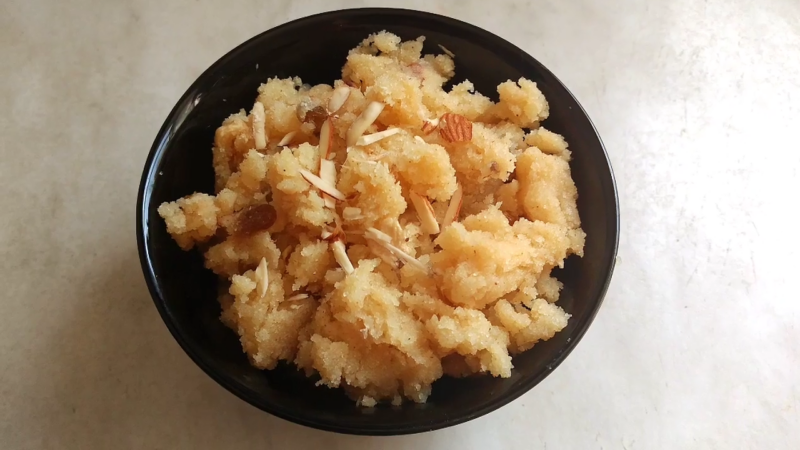Suji Halwa Recipe with Milk – Indian Semolina Pudding
If there’s one dessert that never fails to bring warmth and comfort, it’s Suji Halwa, also known as Rava Sheera or Semolina Pudding. With just three simple ingredients—semolina, ghee, and milk (or water)—you can create a dish that’s rich, aromatic, and absolutely delicious.
This halwa isn’t just a sweet treat; it holds a special place in Indian traditions. From festive celebrations to religious rituals, Suji Halwa is always on the menu. In my home, it’s a must-have during Satyanarayan Katha, where it’s made using only milk, giving it a divine richness.
But the beauty of Suji Halwa is that it’s not just for festivals. In Gujarati families like mine, it’s often made to mark new beginnings—whether it’s moving into a new house, buying a new car, or even just celebrating small moments of happiness.
It’s also a lifesaver when guests arrive unexpectedly—there’s an unspoken rule in many Indian homes that you always serve something sweet to visitors, and for me, Suji Halwa is always the first choice.
I’ve been making this halwa for years, and it’s a favorite among my relatives. If you’ve never tried making it before, don’t worry! Just follow along, and you’ll have a perfect, melt-in-your-mouth halwa in no time.
And if it’s your first time, be sure to check out the “Avoid Mistakes at First Attempt” section—those tips will make all the difference!
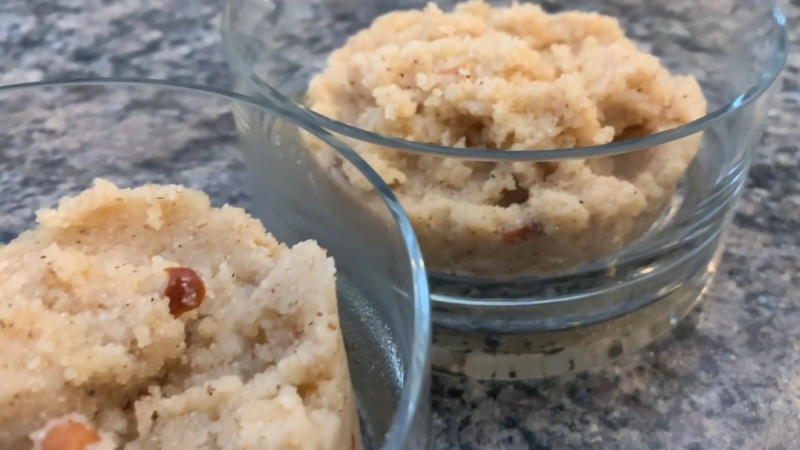
Suji Halwa (Rava Sheera / Semolina Pudding)
Equipment
- Kadai or heavy-bottomed pan Helps evenly roast semolina without burning
- Small saucepan For warming milk and water
- Wooden spoon or silicone spatula Ideal for continuous stirring
- Measuring cups & spoons For accurate measurements
- Serving bowls Traditional or modern, your choice!
Ingredients
Main Ingredients
- ½ cup semolina (suji) Fine or medium-coarse
- ½ cup ghee (clarified butter) Pure ghee preferred
- 1 cup milk Full-fat for creaminess
- ½ cup water
- ½ cup sugar Adjust to taste
For Flavor & Garnish
- ½ tsp cardamom powder
- Handful chopped nuts Cashews, almonds, pistachios, raisins
Instructions
- Roast the SemolinaHeat ½ cup ghee in a kadai on medium flame.Once melted, add ½ cup semolina and begin roasting.Stir continuously until the semolina turns light golden and emits a nutty aroma (5–7 minutes).
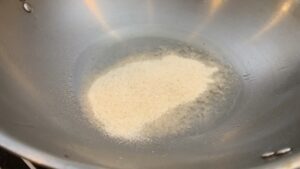
- Warm the LiquidWhile roasting, in a separate pan, heat 1 cup milk and ½ cup water together for about 2 minutes—do not boil.Warm liquid prevents lumping when added to semolina.

- Cook the HalwaLower the flame. Gradually pour the warm milk-water mix into the roasted semolina, stirring constantly.Keep stirring as the semolina absorbs the liquid and thickens.Add ½ cup sugar. Mix well and continue cooking until halwa thickens again and ghee starts to separate.
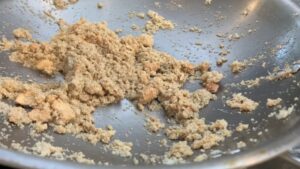
- Finish and ServeAdd chopped nuts and mix well.Sprinkle ½ tsp cardamom powder. Stir everything together.Serve hot, garnished with more nuts or an extra spoon of ghee.
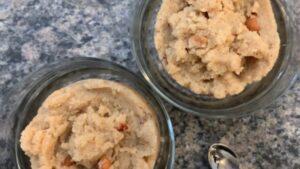
Video
Notes
Cooking Tips
- Roast patiently: This step defines flavor and prevents a raw aftertaste.
- Always warm liquids: Avoid curdling or lumping by never adding cold milk/water to hot semolina.
- Adjust sweetness: Prefer it less sweet? Use ⅓ cup sugar instead.
- Flavor twists: Add saffron strands soaked in milk or replace sugar with jaggery for variation.
- For a richer texture: Use only milk instead of water + milk combo.
Perfect Pairings & Serving Suggestions
The beauty of Suji Halwa lies not just in its simplicity, but in how wonderfully it pairs with other dishes. To elevate your dessert experience, here are a few ways you can serve it to perfection:
Traditional Thali Combo:
Serve Suji Halwa alongside fluffy puris and spicy potato curry (aloo sabzi). This classic trio is often enjoyed during festivals or special brunches and provides the perfect balance of sweet, savory, and spicy flavors.
Breakfast Delight:
Enjoy your halwa warm alongside crispy masala chai, poha, or freshly made parathas. The sweetness complements the savory breakfast dishes beautifully.
Festive Feast Companion:
Pair Suji Halwa with savory dishes like chole (spicy chickpea curry), vegetable pulao, or dal fry with rice for a complete festive meal.
Tea-Time Comfort:
Offer halwa as a comforting snack during tea-time with crispy mathris, namak pare, or khari biscuits. Its rich texture contrasts deliciously with crunchy snacks.
Dessert Platter:
Create a dessert platter by serving small bowls of Suji Halwa alongside other traditional Indian sweets like Gulab Jamun, Jalebi, and Rasmalai. Guests will appreciate the variety and complementary flavors.
Complementary Additions to Elevate Your Halwa
To further enhance your Suji Halwa experience, consider these flavorful additions:
- Saffron Infusion:A pinch of saffron strands soaked in warm milk adds a luxurious aroma and rich golden hue.
- Coconut Twist:Stir in some freshly grated or lightly toasted coconut flakes for added texture and sweetness.
- Fresh Fruit Topping:Serve with fresh fruit slices like ripe bananas, mangoes, or berries for a fresh twist and vibrant color contrast.
- Ice Cream Fusion:Top warm Suji Halwa with a scoop of vanilla ice cream or kulfi for an indulgent dessert fusion.
Bottom Line
I’ve made Suji Halwa more times than I can count, and every single time, it brings that warm, nostalgic feeling of home. Whether it’s for a festival, a celebration, or just a craving, this dessert never fails to comfort and satisfy. The secret is in roasting the semolina just right, using pure ghee, and balancing the sweetness—once you get that, you’re golden.
It’s much like making a perfect Gujarati Dhokla, where the right balance of ingredients and timing can make all the difference.
So, the next time you want something warm, rich, and incredibly simple to make, skip the store-bought sweets and whip up a fresh batch of homemade Suji Halwa. Trust me, one spoonful, and you’ll see why this dish has been a favorite in Indian households for generations!

